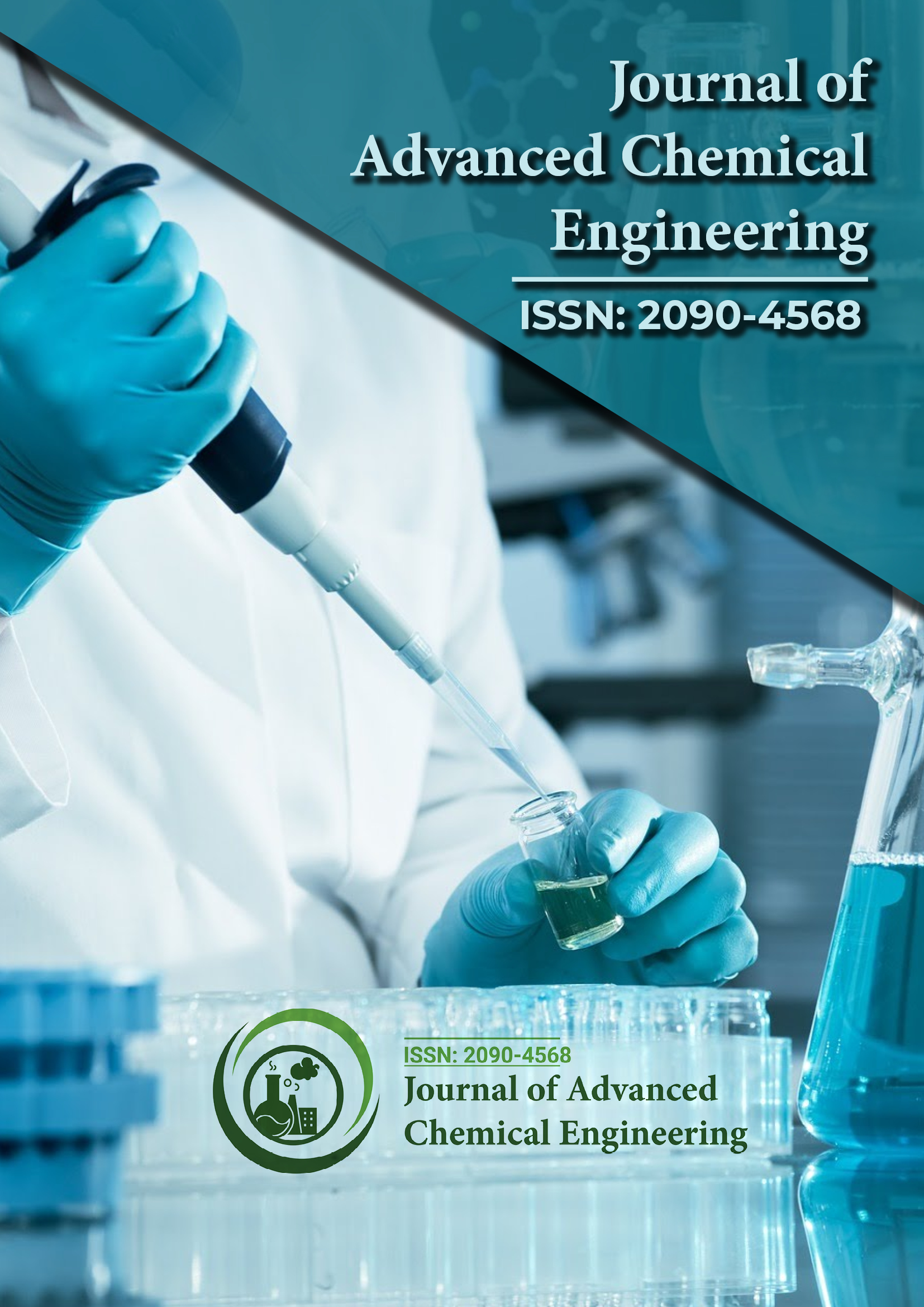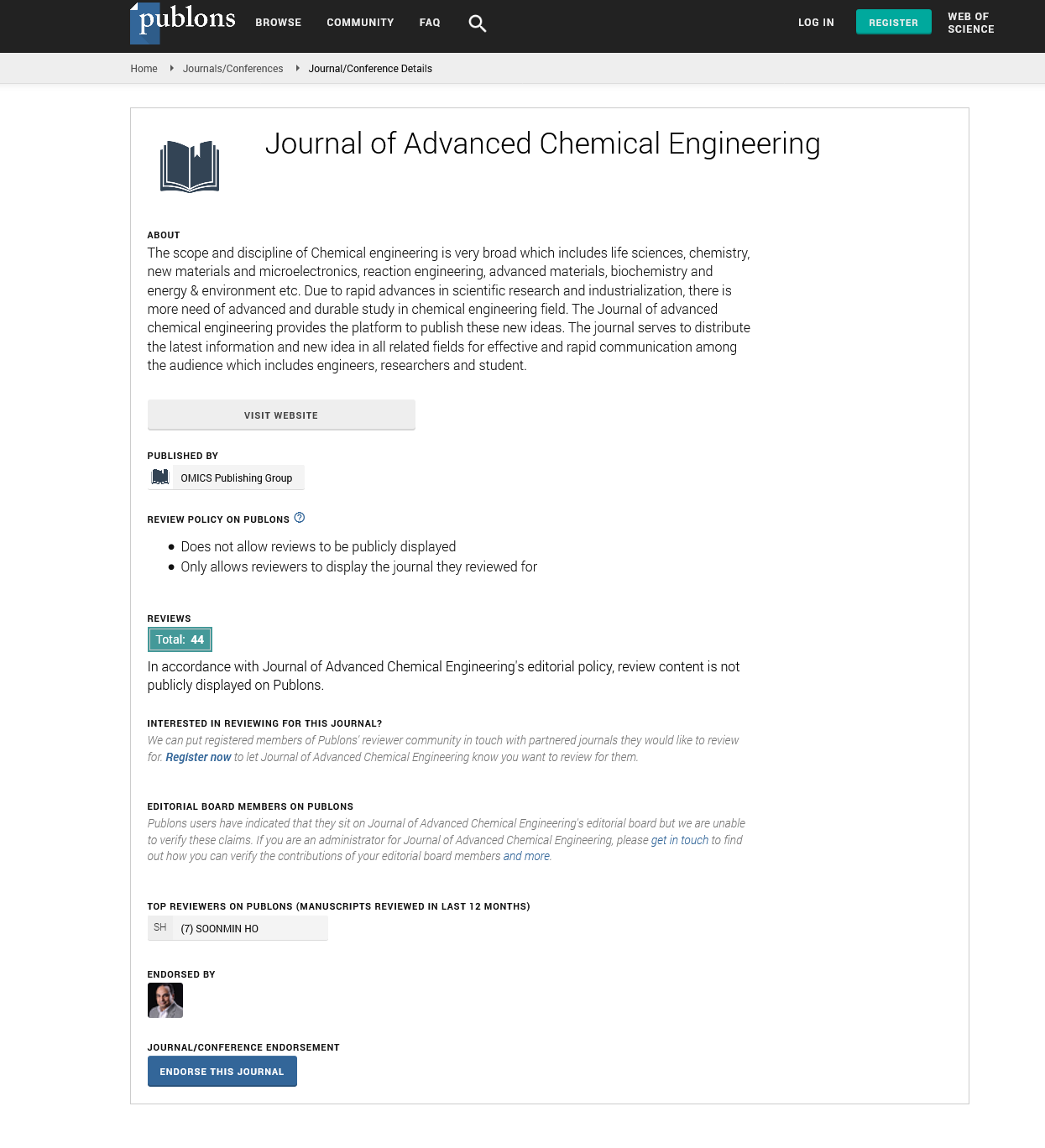Indexed In
- Open J Gate
- Genamics JournalSeek
- Smithers Rapra
- RefSeek
- Directory of Research Journal Indexing (DRJI)
- Hamdard University
- EBSCO A-Z
- OCLC- WorldCat
- Scholarsteer
- Publons
- Geneva Foundation for Medical Education and Research
- Google Scholar
Useful Links
Share This Page
Journal Flyer

Open Access Journals
- Agri and Aquaculture
- Biochemistry
- Bioinformatics & Systems Biology
- Business & Management
- Chemistry
- Clinical Sciences
- Engineering
- Food & Nutrition
- General Science
- Genetics & Molecular Biology
- Immunology & Microbiology
- Medical Sciences
- Neuroscience & Psychology
- Nursing & Health Care
- Pharmaceutical Sciences
Perspective - (2022) Volume 12, Issue 5
A Designed Process of Building up Natural Gas Pipeline Infrastructure
Charles Robert*Received: 04-May-2022, Manuscript No. ACE-22-16834; Editor assigned: 09-May-2022, Pre QC No. ACE-22-16834 (PQ); Reviewed: 23-May-2022, QC No. ACE-22-16834; Revised: 30-May-2022, Manuscript No. ACE-22-16834 (R); Published: 08-Jun-2022, DOI: 10.35248/2090-4568.22.12.226
Description
Natural gas reforming is a complicated and high manufacturing technique that builds upon the prevailing natural gas pipeline transport infrastructure. Today, 95% of the hydrogen produced in the United States is made through natural gas reforming in massive important plants. This is an essential era pathway for near-time period hydrogen manufacturing.
Working
Natural gas carries methane (CH4) that is used to supply hydrogen with thermal processes, together with steam-methane reformation and partial oxidation. Although these days maximum hydrogen is made out of natural gas, the Hydrogen and Fuel Cell Technologies; Office is exploring quite a few approaches to supply hydrogen from renewable resources.
Steam-methane reforming
Most hydrogen produced these days in United States is made through steam-methane reforming, a mature manufacturing technique in high-temperature steam (700°C-1000°C) is used to supply hydrogen from a methane source, together with natural gas. In steam-methane reforming, methane reacts with steam below 3 bar-25 bar pressure (1bar=14.5 psi) within the presence of a catalyst to supply hydrogen, carbon monoxide, and an incredibly small quantity of carbon dioxide. Steam reforming is endothermic reaction that is warmth and should be furnished to the technique for the response to process further.
Subsequently, in what's known as the "water-gas shift response," the carbon monoxide and steam are reacted the use of a catalyst to supply carbon dioxide and greater hydrogen. In a very last technique step known as "pressure-swing adsorption," carbon dioxide and different impurities are eliminated from the gas stream, leaving basically natural hydrogen. Steam reforming also used to supply hydrogen from different fuels, together with ethanol, propane, and gasoline.
Steam-methane reforming response
CH4+H2O (+ warmth) → CO+3H2
Water-gas shift response
CO+H2O → CO2+H2 (+ small quantity of warmth)
Partial oxidation
In partial oxidation, the methane and different hydrocarbons in natural gas react with a confined quantity of oxygen (usually from air) and that is insufficient to absolutely oxidize the hydrocarbons to carbon dioxide and water. With much less than the stoichiometric quantity of oxygen available, the response merchandise incorporate frequently hydrogen and carbon monoxide (and nitrogen, if the response is accomplished with air in preference to natural oxygen), and an incredibly small quantity of carbon dioxide and different compounds. Subsequently, in a water-gas shift response, the carbon monoxide reacts with water to shape carbon dioxide and greater hydrogen.
Partial oxidation is an exothermic technique-it offer off warmth. The technique is usually quicker than steam reforming and implies for a smaller reactor vessel and visible in chemical reactions of partial oxidation, this technique to begins with production of less hydrogen consistent with unit of the enter gasoline than acquired through steam reforming of the equal gasoline.
Partial oxidation of methane response
CH4+1/2O2 → CO+2H2 (+ warmth)
Water-gas shift response
CO+H2O → CO2+H2 (+ small quantity of warmth)
Today, low-cost natural gas reclamation can provide hydrogen for Fuel Cell Electric Vehicles (FCEVs) and other applications. In the long term, the DOE expects hydrogen production from natural gas to be enhanced by production from renewables, nuclear, coal (with carbon capture and storage) and other energy sources.
Other low carbon household appliances
Lower oil consumption and emissions than gasoline in internal combustion engine vehicles. The only product from the FCEV exhaust is water vapor, but even with an upstream process that produces hydrogen from natural gas and distributes and stores it for use in FCEVs, total greenhouse gas emissions are reduced to half, and oil is more than 90% less than it is to today's gasolinepowered vehicles.
Citation: Robert C (2022) A Designed Process of Building up Natural Gas Pipeline Infrastructure. J Adv Chem. 12:226.
Copyright: © 2022 Robert C. This is an open-access article distributed under the terms of the Creative Commons Attribution License, which permits unrestricted use, distribution, and reproduction in any medium, provided the original author and source are credited.

